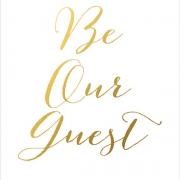We’ve been talking about Core Values, the nutrients that “feed” your company’s customer experience. Now it’s time to move up and actually construct a system that can consistently deliver great experiences.
We’ve all heard about the road to hell and what it’s paved with. If your organization is all about the core values but you have no systems or processes, no structure, no architecture, you’ll fail. If you’re values-driven but structure-impoverished, despite your incredible niceness, people will get mad at you and flame you on Yelp.
One of the reasons I love living in Santa Cruz, California, is that it’s a community where people really wear their values on their sleeve. We are awash in good vibes and good intentions. But it’s not been a great place to go out to dinner.
What do I mean by that? Feather, my server, smiles a lot and greats me with genuine warmth. The organic food I’ll be enjoying this evening was sustainably grown nearby. But poor Feather she doesn’t have the training or systems in place to support her success. They’re out of the very thing on the menu I want most. My dinner order isn’t quite right, or the food comes out cold because the place is slammed and there aren’t enough servers on. The restroom is adrift in paper towels and doesn’t appear to have been tidied up by anyone over the course of the busy evening.
Recently my husband and I dined at a local institution that I hadn’t visited in a couple of years, the Shadowbrook. The Shadowbrook is the sort of lovely, landmark, touristic restaurant where you go for your prom, or take the out of town relatives (the ones you like.) It sits on the banks of a beautiful creek just beyond the beach in the charming village of Capitola. It is enclosed by verdant gardens and trickling streams. A friendly neighborhood cat is always there to greet you as you step into a little funicular railway car to take you down the very steep hill into this magical grotto. Got the picture?
These places are generally lousy. They rest on their laurels (or in the case of the Shadowbrook, their giant tree ferns.) In most of these pretty-face tourist traps, food quality is ho-hum. The service is jaded. The prices are high.
As we were being seated, the hostess asked us if we were celebrating a special occasion. Later we heard other diners being asked this question as well. This, my friends, is evidence of a “system.” The Shadowbrook understands that its guests come there for special occasions–not because there isn’t time to make dinner on Friday night. By understanding your special occasion, they accomplish two things: they identify special needs (birthday cake and candle) and they honor the special-ness of your visit, making you feel good. Over the years, they have learned that it makes sense to ask about your occasion. And now it is incorporated into the process and into your “journey” as a customer.
They are fully aware that they are in the business of creating memories. In fact, the Shadowbrook is a finely tuned memory-creation machine. Step aboard, and your work is done. They have it under control. You are not anxiously gazing around the dining room trying to get a server’s attention or asking to have your water refilled. That’s because they have a powerful system, a Ferrari engine of hospitality.
My husband and I had an exceptional dining experience that night. You would never have known this restaurant had been there since the late 1940’s. They fully grasped the significance of our visit and made the evening a special occasion for two. They were doing something that in our Selvice course we call “making it fresh daily.”
To that end, the service was crisp but never rote. The waiter was immaculately attired. He was professional. He was warms and personable but did not try to become our best friend. The busser was every bit as careful, thorough and professional. There was a sense of pride in the way they carried themselves and communicated.
How? These folks had been trained. That’s an element of structure that is too often overlooked. If you think your team members can just “learn by doing,” think again. Formal training is essential to success, and the “throw them in the water” school of training has been debunked by research.
The food was terrific, too. Better than it even needed to be. Very fresh, lots of local-ness, and perfectly cooked. We left impressed, despite the hefty check, as the cat saw us off at the top of the hill. (I really don’t know how they get the cats to do this.)
Structure is about making the intangible tangible. It’s the Body to your Core Values Soul. It holds things together. It makes things happen. Consistently.
Structure is about doing it the right way, again and again. Its purpose is not to create a brilliant, one-of-a-kind improvised performance. (But it may feel that way when it’s done exceptionally well, as in great theatre.)
How does Structure manifest itself?
- People Plan
- Organizational structure
- Consistent hiring process
- Job descriptions and performance standards
- Appraisal and Coaching
- Codified Standards
- Communication Plan
- Documentation
- Meetings
- Training
- Reviews
- Information System
- Physical Structure
- The design and flow of the physical plant
- Experience flow, Salesflow or merchandising
Structure is like the iceberg of CX. 90% of it is invisible to the customer–or should be.
There are plenty of companies that are structure-centric and values-impoverished. Any left-brain driven outfit is going to be about structure. Medical offices are All. About. Structure. These are businesses that are keen on instructing their customers on the rules. These are the businesses where you, the customer, are expected to conform to the system, not the other way around. These are the companies where you hear the laborious grinding of gears as service is slowly extruded from the machine.
So now we have Core Values and we have Structure. Any company that masters these two elements must have reached the World Class CX level, right?
Not quite. Our Shadowbrook meal had a little something extra. My next blog will talk about that ineffable, above-and-beyond level, where CX starts to look a lot like Art.










